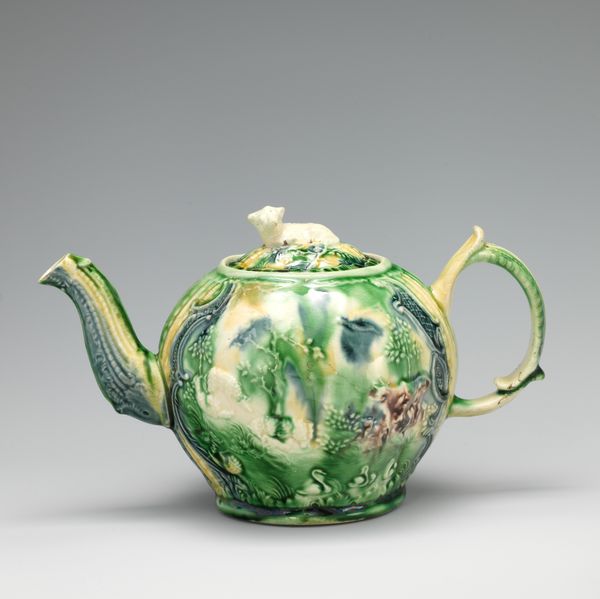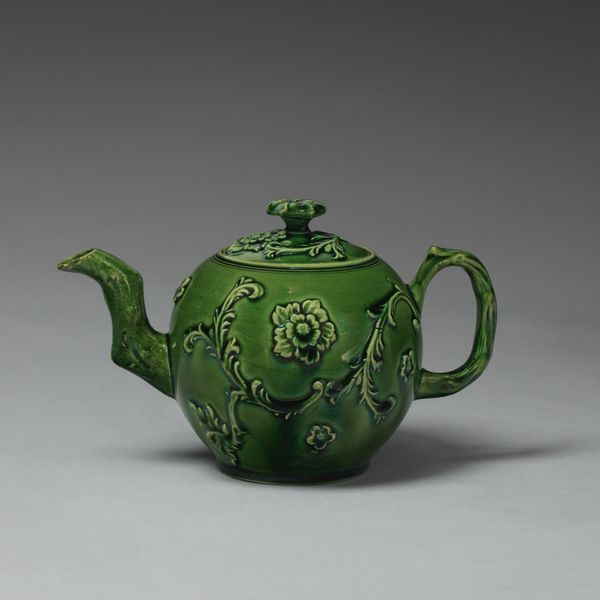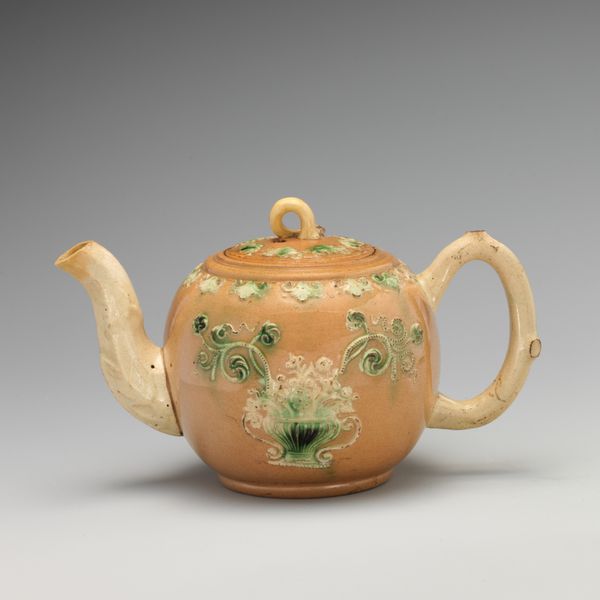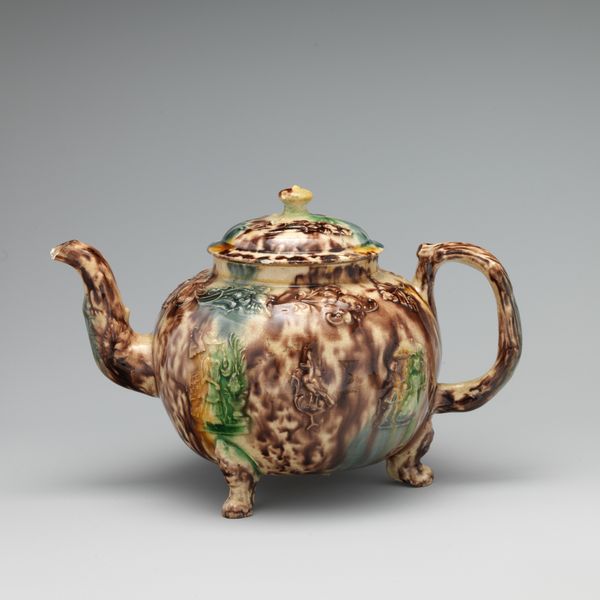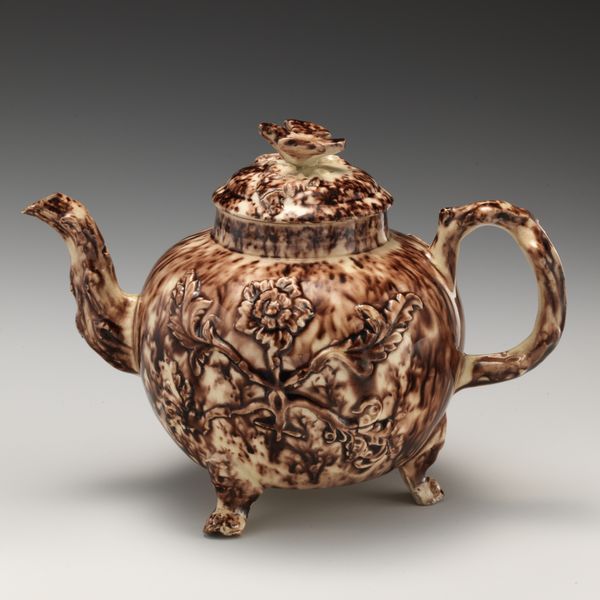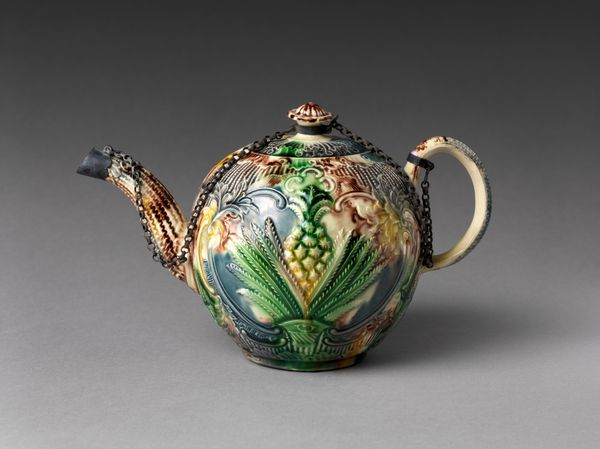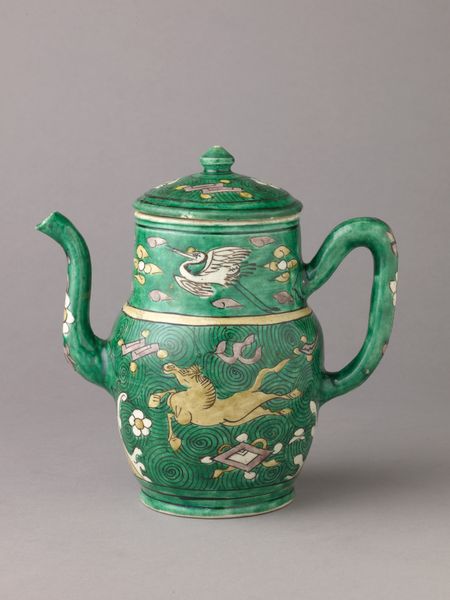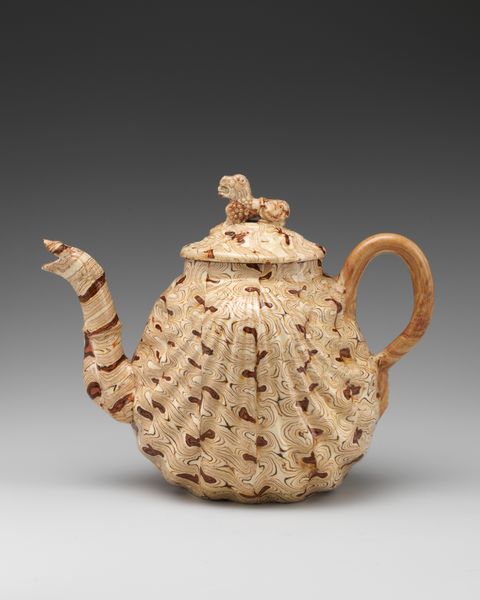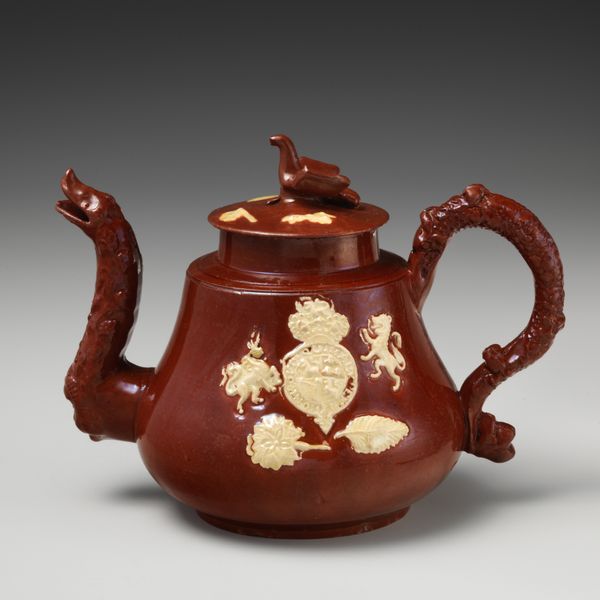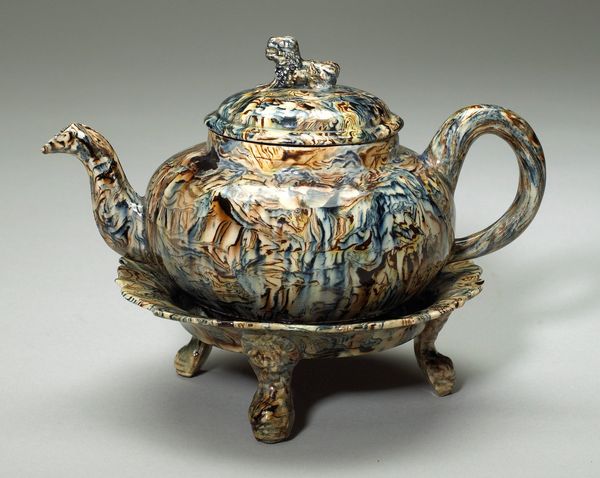
ceramic, sculpture, wood
#
ceramic
#
stoneware
#
sculpture
#
wood
#
decorative-art
#
cartoon carciture
#
rococo
Dimensions: Height: 4 5/8 in. (11.7 cm)
Copyright: Public Domain
Curator: Immediately striking, wouldn't you say? It's as if a dragon fruit decided to become a teapot! Editor: Well, indeed. This charming, although rather flamboyant, piece, entitled "Teapot," was crafted between 1745 and 1755 by the esteemed Astbury-Whieldon manufactory. Displayed here at the Metropolitan Museum of Art, it stands as a delightful example of decorative-art and rococo sensibilities rendered in glazed ceramic, specifically, stoneware, incorporating touches suggestive of wood. Curator: It reminds me of a whimsical cartoon character – or a particularly grumpy garden gnome's hat. The colors – those splashes of green and brown over the cream – give it this fantastic, almost fantastical earthiness. Editor: Note the deliberate asymmetry and organic modelling, elements consistent with the Rococo. See how the handle mimics a gnarled branch, extending an illusion, if only subtly? There's a dynamism created not just by form but also a rather intriguing semiotic exchange – the teapot simultaneously evokes nature and artifice. Curator: True, the handle has character. But the way those leafy swirls practically chase each other around the body makes me think of a secret garden – one where mischievous spirits serve afternoon tea. Imagine pouring chamomile from this. The experience alone might conjure new spells. Editor: A beguiling thought. And structurally, consider the juxtaposition of the rounded form against these high-relief details – foliage, the undulating bands. They exemplify rococo's fascination with playful irregularity and ornate patterning. The glaze, too, presents an interesting study in controlled accident; it suggests haphazardness while subtly obeying the artist's intention. Curator: And is it not just marvelous how something so deliberately crafted, and frankly a little bit outlandish, can still feel… homely? It makes you want to gather 'round with fantastical stories as fragrant tea steams into the air. Editor: Ultimately, that dialectic of crafted and organic, formal and fantastic renders "Teapot" so intriguing. A fine glimpse into mid-18th century playfulness and artistic exploration through form and material. Curator: Agreed – a reminder that even something functional can harbor a wealth of imaginative narrative.
Comments
No comments
Be the first to comment and join the conversation on the ultimate creative platform.
